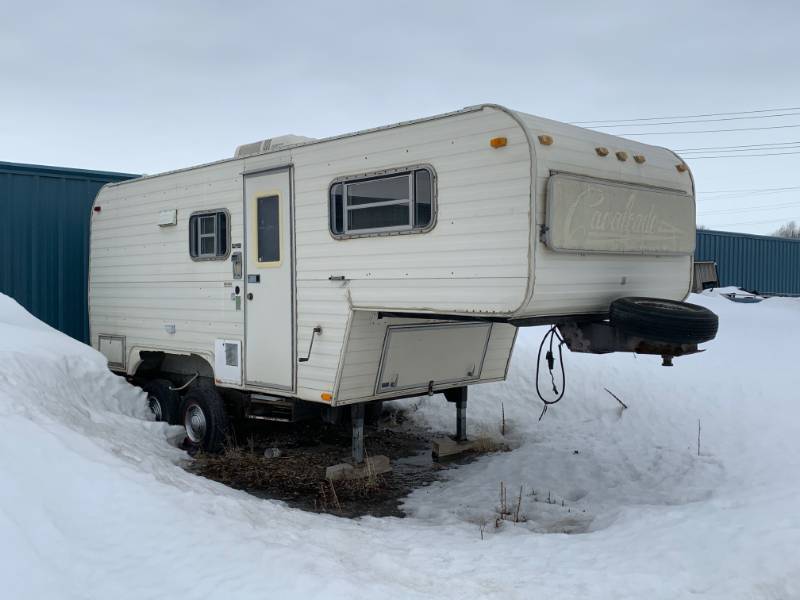alfadriver said:
Curtis73 (Forum Supporter) said:
My rule is: With a 5er, as long as the truck can handle the weight, you can go darn near as long as you want. With a TT, as long as the truck can handle the length, then you can go as heavy as you want (within reason). With a 5er, you'll run out of towing weight capacity before you run out of safe length. With a TT, you'll usually run out of safe length before you reach the max towing weight, especially if you're talking about a modern lightweight RV.
Can you explain that with a little more detail? Or how do you calculate the max length of a trailer you can pull? I know that trailers are measured tongue to bumper- but does the axle location factor into that, too? That would be good to know that.
Well, there really isn't any calculating it. It's kind of like trying to predict what MPG you'll get. Too many factors.
There have been changes to how RVs are measured, and the length of the trailer is always nominal... meaning it might be a 26' trailer, but it may actually measure 25'-4" or 26'-8". I would have to look up the changes to how they're measured. Trailer measurements are kind of like SAE and net HP, or crank hp and wheel hp. They changed over the years and I used to know all that junk but it never really amounted to a hill of beans in real life. At some point in history, TTs could be measured by the size of the box or the overall length. 5ers could be measured from the pin or from the size of the box. Further confusion can happen because sometimes the pin is in front of the box or under the box, like these:
Pin in front

Pin under the box like this

The former (pin front) design has become more common in the last 20 years because of the dominance of short-bed trucks. Back in the day when almost every truck had an 8' bed that was mostly identical across all brands, the pin was usually under the box. There for a decade or so, a sliding 5er hitch was the hot ticket so that you could match your new short bed truck to your old pin-under 5er.
On the length/weight part, it was never a problem 40 years ago. Manufacturers didn't have access to light weight materials like today, so trailers were heavy. I had a Scotty 18' trailer from the 60s that weighed almost 4000 lbs empty. If you were going with a longer trailer, you would run out of weight capacity before you got too long to be dangerous. These days RV makers are using foams, composites, and computer engineering to keep things super light. A 7500-lb towable in 1980 was probably 24'. Today it might be 32'.
In the case of a TT and side wind forces, you have the additional leverage based on the distance from the axle to the hitch ball, so yes, the amount of rear overhang has a lot to do with it. You basically have to compare the length of the trailer to the distance between the trailer axle and ball... and compare that to the wheelbase and overhang of the tow vehicle. A long trailer not only has more real estate to catch wind and therefore greater force, but it's also a longer lever giving it more mechanical advantage. If the tow vehicle is proportionally just as much longer wheelbase, the lever (tow vehicle) that the lever (trailer) is trying to force somewhat cancels out the mechanical advantage.
Then you have to factor in the 700 other things; tire sidewall height and stiffness, bushing stiffness, spring stiffness, suspension design, tongue weight, trailer tire sidewall and spring stiffness, trailer height and aero. Lots of things go into it.
If you've ever towed a larger TT, you may have noticed this phenomenon. Let's say you're in the right lane doing 65. An 18 wheeler is overtaking you in the left lane at 67. When the wind blasting off the side of the big truck's nose hits the side of the trailer, the trailer pushes the hitch to the right, causing the tow vehicle to veer a bit left so you correct with a little bit of right steering. Then when the big truck is beside the tow vehicle blasting your doors (and the TT is in the low pressure area beside the big truck's trailer) you start getting blown to the right and have to correct left. In that same scenario with a 5er, that phenomenon is almost eliminated. When the big truck's blast hits the 5er, it pushes it to the right, but since the fulcrum is directly (or really close to) above the axles, it doesn't have the leverage of prying on the length of frame/hitch behind the axle.
![]()




























